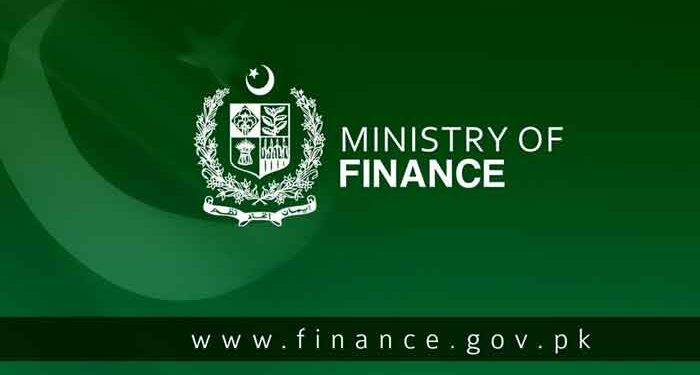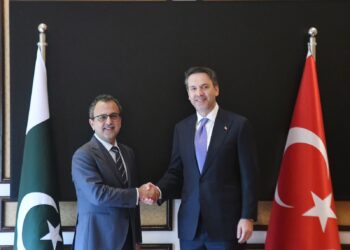ISLAMABAD: The Ministry of Finance (MoF) has said that due to ongoing floods 2025, the agriculture sector is expected to suffer. The assessment of Kharif crops and livestock damages is in progress.
According to monthly Economic Update and Outlook of September 2025, released by the Finance Ministry despite the disruption caused by recent floods, economic activity has remained broadly stable. The rebound in large-scale manufacturing, supported by encouraging trends in cement dispatches, automobile production, and allied industries, indicates strengthening industrial momentum in the months ahead. The external sector is expected to remain stable, with the current account deficit projected to stay manageable despite higher import demand.
Remittances continue to provide strong support, exports are showing early signs of recovery, and declining global commodity prices may help ease the import bill. Nevertheless, flood-related disruptions may exert pressure on food supply chains, leading to an uptick in prices. As a result, inflation is expected to rise temporarily but remain contained within the 3.5–4.5 percent range in September 2025
Pakistan’s economy maintained its trajectory of stabilization and growth during the first two months of FY2026, with moderating inflation, strengthening largescale manufacturing, and contained fiscal imbalances despite the severe floods since July 2025. The LSM sector recorded positive growth, led by textiles, automobiles, and cement, while CPI inflation eased in August 2025. Fiscal consolidation continued, supported by stronger revenue mobilization and prudent expenditure management, resulting in a primary surplus, while exports, remittances, and an adequate level of foreign exchange reserves provided cushion to external sector. Monetary conditions remained stable, and the stock market sustained its bullish momentum, reflecting investor confidence. Although flood induced disruptions pose temporary risks to inflation, the overall outlook signals a stable macroeconomic environment, with supportive trends in industry, external inflows, and fiscal management expected to underpin sustainable growth going forward.
Due to ongoing floods 2025, the agriculture sector is expected to suffer. The assessment of Kharif crops and livestock damages is in progress. The government has declared climate and agriculture emergencies nationwide to tackle escalating climatic challenges and support farmers impacted by the severe floods. During Jul-Aug FY2026, the agricultural credit disbursement has jumped 19.5 percent to Rs. 404.2 billion from Rs. 338.2 billion last years. Imports of agricultural machinery and implements increased 66.7 percent to $29.4 million in Jul-Aug FY2026. During Kharif 2025 (Apr-Aug), urea offtake remained at 2,676 thousand tonnes (12.4 % higher than Kharif 2024), whereas DAP offtake was 552 thousand tonnes (8.7 % higher than Kharif 2024).
Large-Scale Manufacturing (LSM) registered a significant year-on-year (YoY) growth of 9.0 percent in July 2025 and 2.6 percent on month on-month (MoM) basis. Overall, 16 out of 22 sectors recorded positive growth, including textiles, wearing apparel, coke & petroleum products, non-metallic mineral products, and pharmaceuticals. The automobile sector exhibited encouraging performance during Jul-Aug FY2026, supported by substantial increase in the production of cars (100.9%), trucks & buses (69.5%), and jeeps & pick-ups (50.1%). During Jul-Aug FY2026, cumulative cement dispatches reached 7.847 million tonnes, up 20.9 percent from the last year. Domestic dispatches totaled 6.090 million tonnes, a 14.2 percent YoY increase, while exports soared by 51.3 percent to 1.757 million tonnes.
Fiscal accounts strengthened in FY2025, with a marked improvement in fiscal discipline, as evidenced by an eight-year low fiscal deficit and a 24-year high primary surplus. Encouragingly, the effective expenditure management created space for higher development spending in FY2025. These consolidation gains have laid a stronger base for better fiscal management in FY2026. Furthermore, building on these gains, the government is committed to further improve the fiscal performance in FY2026 through effective resource mobilization and a prudent expenditure management strategy. In July FY2026, fiscal performance remained on track. Net federal revenues increased by 7.7 percent to Rs. 440.0 billion, supported by 23.9 percent growth in non-tax revenues and 14.8 percent in tax revenues. A notable increase in non-tax revenues during July FY2026 is largely attributed to higher receipts from petroleum levy, dividends, and defence. During Jul-Aug FY2026, FBR’s net collection expanded by 14.1 percent to Rs. 1,661.5 billion. On the expenditure side, July FY2026 outlays grew by 28.8 percent to Rs. 990.1 billion. Consequently, the fiscal deficit was contained at 0.2 percent of GDP, while the primary surplus improved to Rs. 228.9 billion (0.2% of GDP) compared to Rs. 107.1 billion (0.1% of GDP) last year.
The current account posted a deficit of $624 million during Jul-Aug FY2026, increasing from $430 million recorded last year. Goods exports rose 10.2 percent to $5.3 billion, while imports increased 8.8 percent to $10.4 billion, resulting in a trade deficit of $5.1 billion compared to $4.8 billion last year. Gains in key export were observed in knitwear (16.9%), garments (10.6%), and bedwear (12.0%). Increases in major imports were recorded in petroleum products (17.8%) and palm oil (29.1%), while petroleum crude decreased (6.1%). Service exports grew 11.5 percent to $1.4 billion; imports increased 13.4 percent to $2.1 billion, with a service trade deficit of $708 million against $604 million last year. IT exports increased by 18.3 percent to $691.7 million. Remittances were up 7.0 percent to $6.4 billion, led by inflows from Saudi Arabia (24.6% share) and UAE (20.6%). Net FDI inflows recorded at $364.3 million. Main sources were China ($120 million) and Hong Kong ($60 million). Sector-wise, power ($156.9 million) and financial services ($110.2 million) attracted the most FDI. However, private and public FPI recorded net outflows of $74.8 million and $11.8 million, respectively. As of September 19, 2025, foreign exchange reserves stood at $19.8 billion, including $14.4 billion with SBP.
The Monetary Policy Committee (MPC), in its meeting on 15th September 2025, kept the policy rate unchanged at 11 percent. While inflation remains moderate and highfrequency indicators show improvement, the decision reflects caution over the evolving outlook amid ongoing floods. During 1st July29th August FY2026, money supply (M2) contracted by 2.3 percent compared to 2.5 percent last year. Within M2, Net Foreign Assets increased by Rs. 34.6 billion, while Net Domestic Assets declined by Rs. 990.0 billion. The government retired Rs. 2,328.2 billion in budgetary borrowing compared to net borrowing of Rs. 733.3 billion last year, and the private sector retired Rs. 214.8 billion. Meanwhile, the Pakistan Stock Exchange sustained its bullish trend in August 2025. KSE100 Index climbed 9,227 points during the month to close at 148,617, and market capitalization expanded by Rs. 952 billion to Rs. 17,655 billion.
Islamabad seeks Turkiye’s reputable firms partipation in DISCOs privatisation process
ISLAMABAD Pakistan has invited reputable international private-sector investors to participate in the upcoming privatization of its Power Distribution Companies (DISCOs),...
Read more














